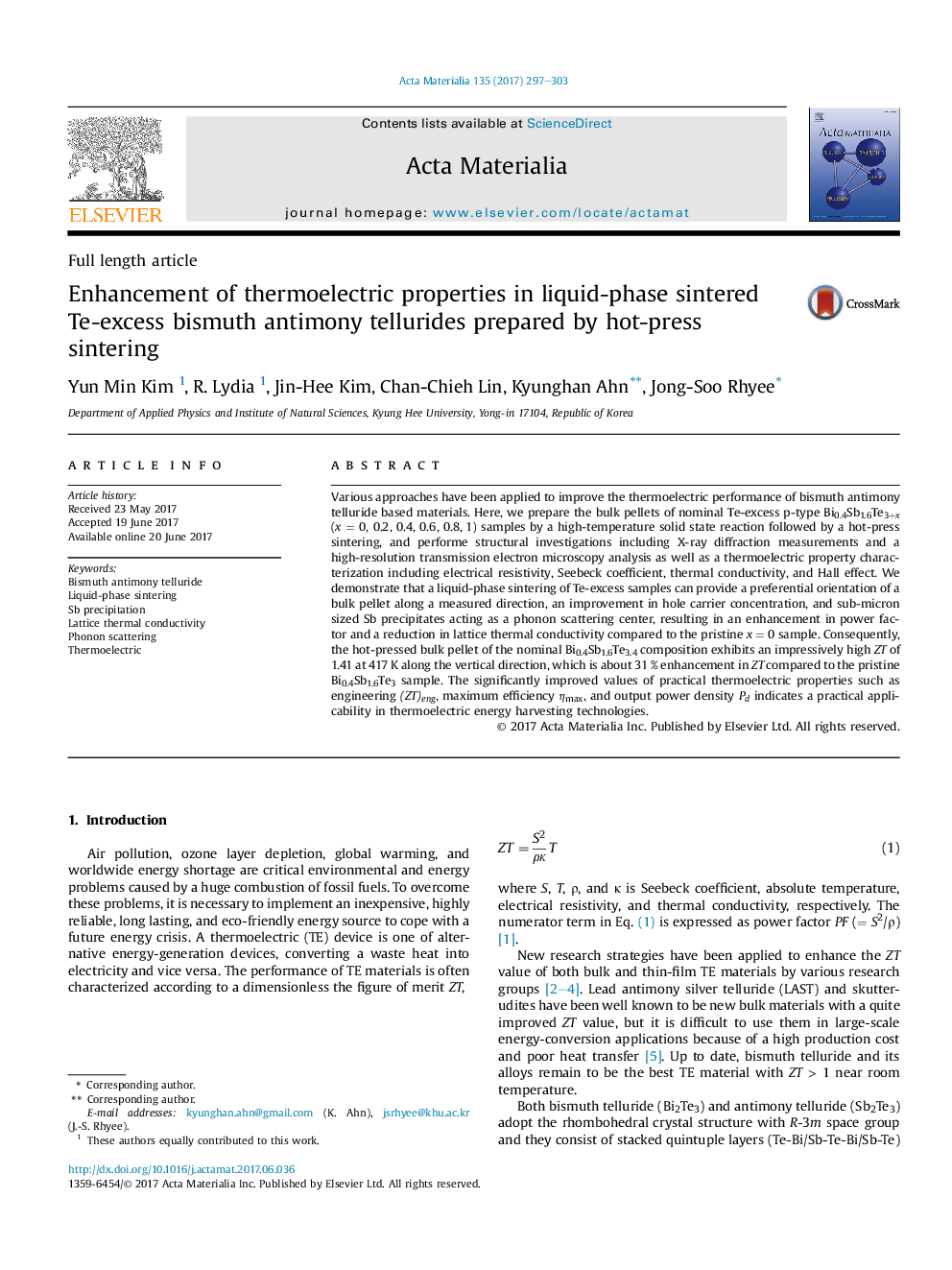| Article ID | Journal | Published Year | Pages | File Type |
|---|---|---|---|---|
| 5435917 | Acta Materialia | 2017 | 7 Pages |
Various approaches have been applied to improve the thermoelectric performance of bismuth antimony telluride based materials. Here, we prepare the bulk pellets of nominal Te-excess p-type Bi0.4Sb1.6Te3+x (x = 0, 0.2, 0.4, 0.6, 0.8, 1) samples by a high-temperature solid state reaction followed by a hot-press sintering, and performe structural investigations including X-ray diffraction measurements and a high-resolution transmission electron microscopy analysis as well as a thermoelectric property characterization including electrical resistivity, Seebeck coefficient, thermal conductivity, and Hall effect. We demonstrate that a liquid-phase sintering of Te-excess samples can provide a preferential orientation of a bulk pellet along a measured direction, an improvement in hole carrier concentration, and sub-micron sized Sb precipitates acting as a phonon scattering center, resulting in an enhancement in power factor and a reduction in lattice thermal conductivity compared to the pristine x = 0 sample. Consequently, the hot-pressed bulk pellet of the nominal Bi0.4Sb1.6Te3.4 composition exhibits an impressively high ZT of 1.41 at 417 K along the vertical direction, which is about 31 % enhancement in ZT compared to the pristine Bi0.4Sb1.6Te3 sample. The significantly improved values of practical thermoelectric properties such as engineering (ZT)eng, maximum efficiency ηmax, and output power density Pd indicates a practical applicability in thermoelectric energy harvesting technologies.
Graphical abstractA liquid-phase sintering of Te-excess samples can provide a preferential orientation of a bulk pellet along a measured direction, an improvement in hole carrier concentration, and sub-micron sized Sb precipitates acting as a phonon scattering center, resulting in an enhancement in power factor and a reduction in lattice thermal conductivity. The highest ZT of 1.41 at 417 K was obtained for the nominal Bi0.4Sb1.6Te3.4 sample along the vertical direction compared to the pristine sample (ZT = 1.08 at 367 K). The significantly improved values of practical thermoelectric properties such as engineering (ZT)eng, maximum efficiency ηmax, and output power density Pd indicates the practical applicability in thermoelectric energy harvesting technologies.Download high-res image (122KB)Download full-size image
